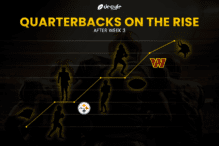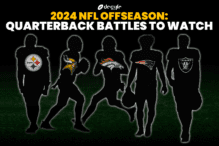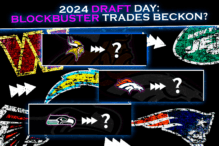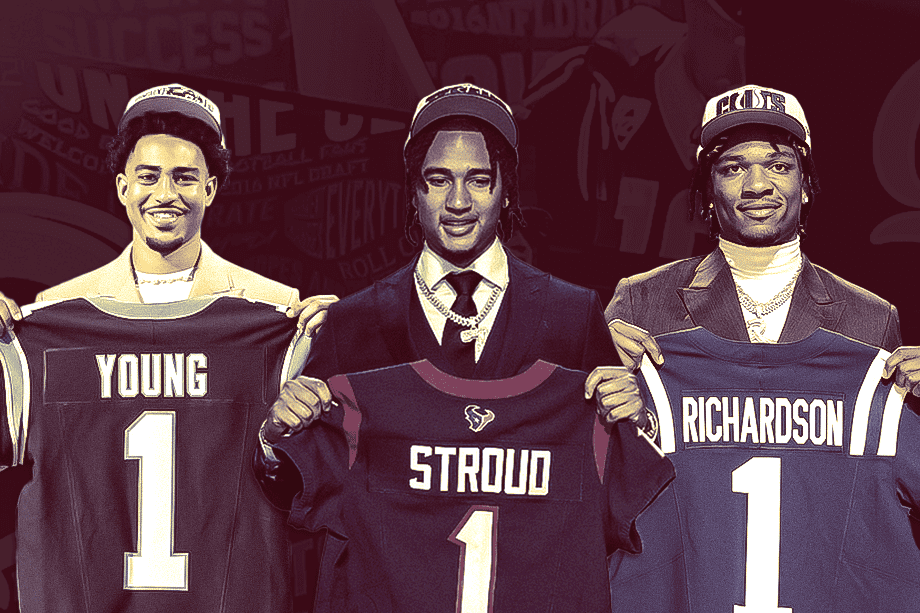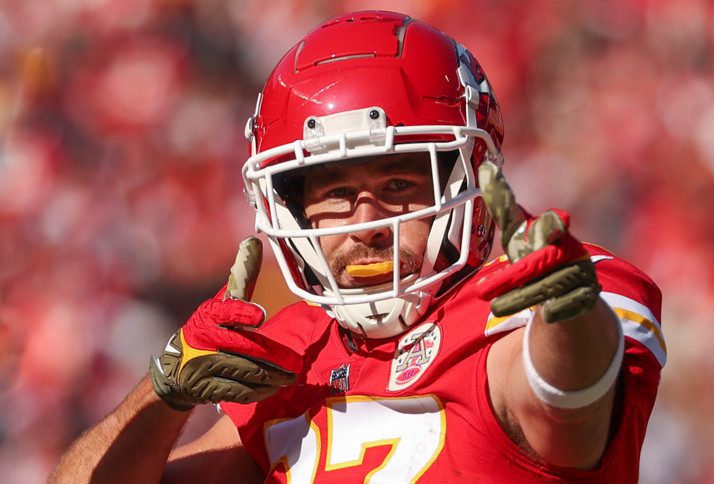

In just six days, the first game of the 2024 NFL preseason kicks off, with the Chicago Bears taking on the Houston Texans in the 2024 Pro Football Hall of Fame Game. Not only does August 1st therefore mark football’s eagerly anticipated return, it also marks the first time that fans will witness three new aspects of the game.
ICYMI: The NFL’s annual Hall of Fame Game will take place on August 1st, with the @ChicagoBears taking on the @HoustonTexans in Canton, Ohio – kicking off the 2024 preseason.#Decyfr #NFL #HallofFame pic.twitter.com/zsuvt8sPLk
— Decyfr Sport (@DecyfrSport) March 26, 2024
Hip-Drop Tackle
Ahead of the 2024 season, NFL teams unanimously voted to ban the hip-drop tackle, in an attempt to further promote player safety. A hip-drop tackle occurs when a defender wraps up the ball-carrier, swivels their hips and becomes a ‘dead-weight’ before dropping onto the ball carrier’s legs, at or below the knee. The technique is commonly used by smaller defenders against opponents that are bigger or stronger.
According to NFL Football Operations, the league analysed over 20,000 tackles over the past two seasons and determined that the hip-drop technique causes “lower extremity injuries at a rate 20 times higher than other tackles.” As a result, using this technique will now result in a 15-yard penalty and an automatic first down.
Kickoff
Once upon a time, kickoffs were deemed one of the most entertaining elements of the game, with big plays being a regular occurrence. In recent years, however – as the NFL sought enhanced safety within the game – additional rules meant that kickoffs were reduced to little more than a repetitive obligation, with only 22% of kickoffs being returned in 2023, per NFL Football Operations.
However, an innovative new format – inspired by the XFL – promises a notable improvement, with special teams coaches predicting around 50-60% of kickoffs to be returned, in a way that simultaneously limits injuries.
ICYMI: The NFL have announced a HUGE change to kickoffs for the 2024 season.
Inspired by the XFL, the NFL’s ‘hybrid kickoff’ rule is designed to encourage returns whilst limiting injuries – thereby reigniting a “dead, ceremonial play”, per Tom Pelissero.#Decyfr #NFL #NFLUK pic.twitter.com/2YRIHY62Gm
— Decyfr Sport (@DecyfrSport) March 26, 2024
So what is this new kickoff format?
Well, kickers will still place the ball on their own 35-yard line. However, rather than lining up alongside the kicker, the other 10 members of the kicking team will now line up on the opposing team’s 40-yard line.
On the other end, the return team must have at least nine blockers lined up in the “setup zone” – between the 30 and 35-yard line – with at least seven players touching the 35-yard line and then up to two returners inside the 20-yard line or “landing zone”. Only the kicker and the two returners are permitted to move before the ball either hits the ground or is touched by a member of the return team.
Should the kick reach the end zone in the air, the returner has a choice – either return the kick or opt for a touchback, giving their offense possession at their own 30-yard line.
The same rules apply if a ball hits the ground or touches a returner before the end zone and then travels into it. The only different being that, in this scenario, a touchback would give the offense possession of the ball at their own 20-yard line. Any kick that is received within the field of play, however, must be returned – while kicks that fail to reach the “landing zone” result in the offense starting at their own 40-yard line.
Additionally, teams will now be limited to just two onside kicks per game which can only be utilised in the fourth quarter.
Chains
The chains used during line-to-gain rulings to determine whether a first down has been achieved or not have become synonymous with gameplay in the NFL. To the degree that the expression “move the chains” is a commonly used phrase amongst fans and players alike.
2023 may have been the last hurrah for the chains, however, as the NFL is considering implementing a new optical tracking system for the 2024 season.
This system, developed by Hawk-Eye – a computer-vision technology used in tennis and cricket for video replays – would accurately measure if a player reached the line-to-gain and subsequently provide officials with precise readings of the ball and player positions. The new system can be compared to the introduction of “goal-line technology” in soccer between 2011 and 2013 – most notably during the 2013 FIFA Confederations Cup ahead of the 2014 World Cup.
By reducing the margin for human error, this technology could also be used to gain additional insights that may aid player and team development.
Having seen the successful implementation of similar technology in the UFL, the NFL will test this new system during the 2024 preseason. If successful – and approved by ownership – the technology will then be used in the regular season.
The optical tracking technology would need to be installed across all 30 NFL stadiums – as well as any international stadiums hosting NFL games. As it stands, the ‘chain gang’ would still be there on game day, but their role would be reduced to that of backup.
Which of these new aspects to the game are you most looking forward to watching this preseason?
https://decyfrsport.com/nfl-101-major-changes-in-2024/
Copied!
















